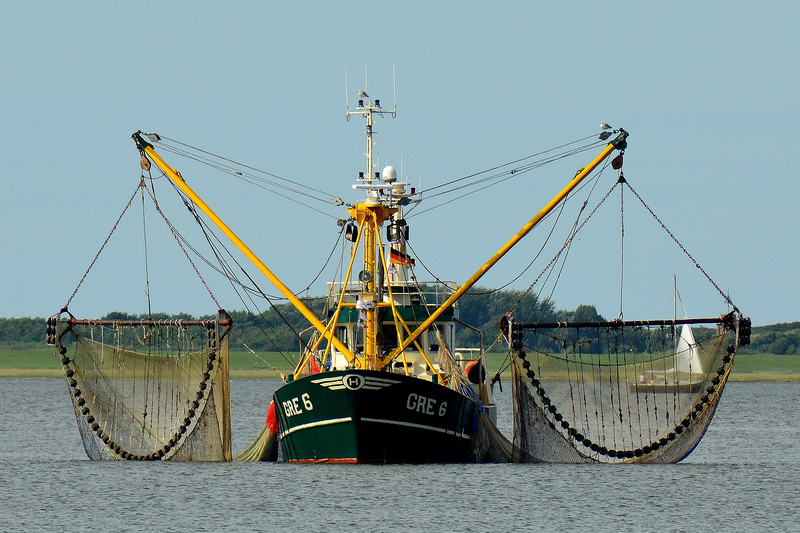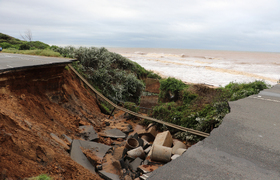Fisheries management is good for fish
14 January 2020 | Story Staff writer. Photo Detmold, Pixabay. Read time >10 min.
Have overfished fish populations been able to recover with better management? This is the question that an international group of researchers sought to answer by collating and analysing a database of 882 fish stocks, comprising nearly half of the world’s fish catch. They found that the abundance of fish has on average increased and that good management has led to healthy or improving fish abundance.
The oceans are a vital source of food for many people across the globe. Fish – an important component of the world food system – account for about 20% of the animal protein and almost 7% of all protein eaten by humans. This number is even higher in some developing regions.
Oceans contribute a significant share of the world’s fish: almost 90% of global fish catch comes from the sea. At the same time, fishing has been recognised as having one of the most widespread human impacts in the world’s oceans.
During the 1990s and 2000s, scientists raised the alarm about the sustainability of fisheries and their long-lasting effect on the oceans, and a suite of papers elevated the profile of the decline of fish and the prevalence of overfishing.
“In 2009, the authors said the fish stocks ‘were poised to recover’. Now we’ve asked: have they?”
New research from a collaboration of researchers from all the continents led by the University of Washington aims to understand whether management – new regulations and appropriate fishing pressure – could allow fish to recover and return to higher abundances. Dr Carryn de Moor, a senior research officer from the University of Cape Town’s (UCT) Department of Mathematics and Applied Mathematics and the Marine Resource Assessment and Management Group, was among the team.
Poised to recover
In 2009, scientists analysed data for 166 stocks in the RAM Legacy Stock Assessment Database, which at that stage included information for abundance and fishing trends up to 2005.
Covering 20% of the world’s fish catches, the stocks in the database, though, were not necessarily representative of the world, as they came from places with solid management: Europe, North America, Australia, New Zealand and South Africa. Many parts of the world have no such management.
Nonetheless, for the stocks in the database, the researchers found that they were – on average – small, smaller than they should be based on management recommendations. But they also found positive indications that they could recover: the levels of fishing in 2005 were low enough to allow the fish to rebound to higher levels of abundance.
That was 11 years ago. What has happened since? Are there more fish or have we sent them beyond some threshold from which they cannot rebound?
What’s the impact of management on the abundance of fish?
“In 2009, the authors said the fish stocks ‘were poised to recover’,” explains de Moor. “Now we’ve asked: have they?”
To do this, they needed more information, though.
Filling the gaps
de Moor co-ordinated the provision of data for South Africa, extending the timeline for the country’s stocks already included in the database and adding data for a few new stocks. “But on a global scale, the expansion was huge,” she explains.
Whereas before the RAM Legacy database covered 20% of the world’s fish catch, now the researchers had information for 882 fish stocks representing 50% of it. The latest expansion now covers regions such South America, the Mediterranean, north-west Africa, Russia and Japan.
Having done that and by comparing the results from previous studies surveying the effectiveness of the management of the same stocks, the team was able to ask: what’s the impact of management on the abundance of fish?
They found that, on average, abundance of fish is increasing and the size of fish stocks is at levels targeted by management. Although there is variability across regions and individual stocks.
Unfortunately, though, there hasn’t been a parallel increase in the amount of fish being caught as a result of the increase in their abundance.
“Where fishing pressure is at appropriate levels, the resource is able to recover,” says de Moor. That is good news for well-managed fisheries.
What about the other half?
Fisheries in the regions not covered by the RAM Legacy database are an important part of food security for many of the poorest people in the world.
“There are still large areas that aren’t included in the database, for example South East Asia and most of the middle of Africa where scientific assessments aren’t available,” says de Moor. “Most of these regions without assessments do not have good fishery management policies, plans or enforcement.”
“Where fishing pressure is at appropriate levels, the resource is able to recover.”
Despite this lack of data, the paper does review what we know about these fisheries and their status. Generally, it’s not good.
Compared to areas where fisheries are well managed, regions with less-developed fisheries management on average harvest fish at a rate three times higher and half the abundance.
“There are still big gaps in the data and these gaps are more difficult to fill,” said co-author Ana Parma, a principal scientist at Argentina’s National Scientific and Technical Research Council and a member of The Nature Conservancy global board. “This is because the available information on smaller fisheries is more scattered, has not been standardised and is harder to collate, or because fisheries in many regions are not regularly monitored.”
More management
“But the reality is good management has a positive impact on fish populations,” says de Moor. “We can change the way we manage fisheries, and in many cases, there can be recovery.”
Armed with these findings, she hopes managers in some of the regions that are under-represented, Africa and South East Asia, for example, will be convinced to get on board.
“Training scientists from some of the under-represented countries to undertake assessments is a long-term goal: there is no quick-fix. The lack of data and complexity of gathering it, particularly for unregulated or small-scale fisheries, is challenging.”
- Hilborn R et al. (2020) Effective fisheries management instrumental in improving fish stock status. Proceedings of the National Academy of Sciences. https://doi.org/10.1073/pnas.1909726116
South African scenario
“South Africa is an interesting case, because it depends on which resources you look at,” says de Moor.
Looking at the combined information on the South African stocks in the database, she points out that the country’s fish abundance is below what management says it should be. However, it also shows our fishing pressure is also below target, suggesting capacity to rebuild.
But de Moor highlights that broad trends can overlie nuances.
“Some of South Africa’s resources are doing all right; some are very well managed. However, our in-shore resources, like abalone and west coast rock lobster, are not, and illegal fishing is exacerbating the problem.
“And then some others are mainly environmentally driven, like sardine, which is currently very low.”
 This work is licensed under a Creative Commons Attribution-NoDerivatives 4.0 International License.
This work is licensed under a Creative Commons Attribution-NoDerivatives 4.0 International License.
Please view the republishing articles page for more information.
Research & innovation


































.jpg)


